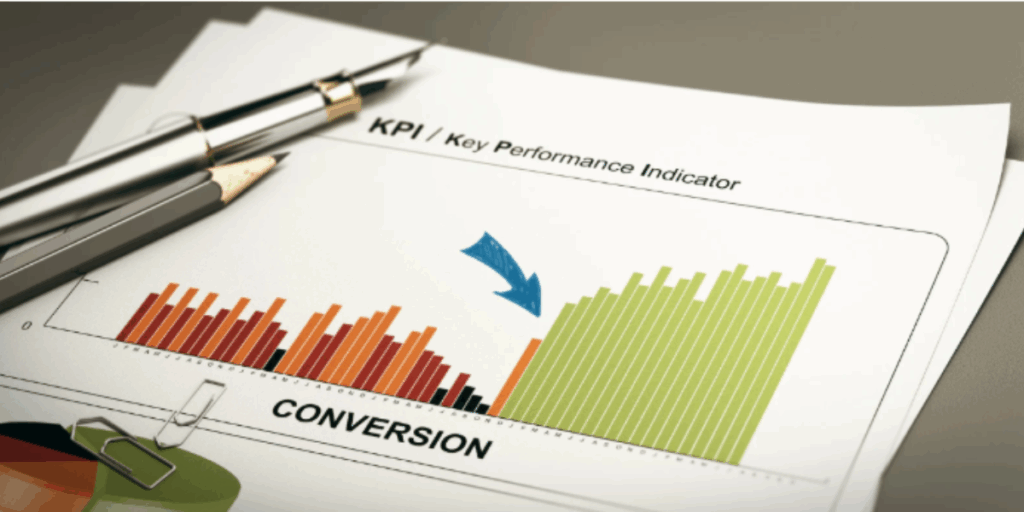Your Shopify store is getting traffic, but visitors aren’t converting into customers. You watch analytics show hundreds of product page views while sales remain disappointingly low. Every lost conversion represents missed revenue that compounds over time.
The average Shopify conversion rate sits at just 1.4%, meaning 98.6% of visitors leave without purchasing. However, stores implementing systematic conversion rate optimization regularly achieve 3-5% conversion rates, effectively tripling their revenue from the same traffic volume.
This comprehensive guide reveals 15 proven strategies that transform underperforming Shopify stores into conversion-optimized sales machines that maximize every visitor’s value.
Understanding Shopify Conversion Rates
Conversion rate optimization for Shopify requires understanding platform-specific benchmarks, performance factors, and optimization opportunities that differ from other eCommerce platforms. Shopify’s unique architecture creates both challenges and advantages for conversion optimization.
Industry Benchmarks and Expectations
Average Shopify conversion rate of 1.4% provides a baseline for performance evaluation, though this varies significantly by industry, traffic source, and store maturity. New stores typically start below this average while established stores with optimization can achieve 3-5% conversion rates.
Mobile vs desktop performance differences show mobile conversion rates averaging 1.2% compared to desktop rates of 2.1%. This gap represents significant optimization opportunity since mobile traffic comprises 70%+ of most Shopify store traffic.
Industry-specific benchmark variations range from 0.8% for electronics to 3.2% for beauty products. Understanding your industry baseline helps set realistic optimization targets and identify performance gaps.
Seasonal fluctuation patterns show conversion rates varying 20-40% during peak seasons like Black Friday and holiday shopping periods. Recent eCommerce statistics reveal seasonal optimization can dramatically impact annual performance.
Factors Affecting Shopify Conversions
Theme design and user experience significantly impact conversion rates through layout optimization, visual hierarchy, and navigation flow. Shopify’s theme ecosystem provides varying levels of conversion optimization, making theme selection and customization critical decisions.
Site speed and technical performance directly correlate with conversion rates, with 1-second delays reducing conversions by 7%. Shopify’s hosted platform provides speed advantages but requires optimization to maximize performance benefits.
Product presentation quality determines whether visitors have sufficient information and confidence to complete purchases. This includes photography, descriptions, reviews, and trust signals that address common purchase objections.
Trust signals and social proof become particularly important for newer Shopify stores lacking brand recognition. Reviews, testimonials, security badges, and guarantee displays significantly impact visitor confidence and purchase decisions.
Strategy 1: Optimize Your Shopify Theme for Conversions

Theme selection and optimization provide the foundation for all other conversion improvements. The right theme, properly customized, can improve conversion rates by 50-100% before implementing additional optimization strategies.
Theme Selection Criteria
Mobile-first design principles ensure optimal performance on devices generating the majority of traffic. Look for themes that prioritize mobile user experience rather than desktop designs adapted for mobile.
Loading speed optimization features include clean code, optimized images, and minimal plugin dependencies. Fast-loading themes provide competitive advantages in both conversion rates and search engine rankings.
Conversion-focused layout elements include prominent call-to-action buttons, streamlined navigation, and product page layouts that guide visitors toward purchase decisions. Avoid themes that prioritize visual appeal over conversion optimization.
Customization flexibility assessment determines whether themes can be modified to implement optimization strategies. Themes with limited customization options may require expensive development work for optimization implementation.
Essential Theme Modifications
Above-the-fold optimization ensures critical elements appear immediately upon page load. This includes navigation, value propositions, product images, and call-to-action buttons that influence first impressions and engagement.
Navigation structure improvements simplify product discovery and reduce bounce rates. Clear category organization, search functionality, and breadcrumb navigation help visitors find relevant products efficiently.
Color psychology application uses colors that encourage action and build trust. Call-to-action buttons should contrast with background colors while maintaining brand consistency and professional appearance.
Typography and readability enhancement ensures product information communicates clearly across devices. Proper font sizes, line spacing, and contrast ratios improve user experience and reduce abandonment.
Strategy 2: Improve Site Speed and Performance
Site speed directly impacts conversion rates, search rankings, and user experience. Shopify stores benefit from hosted infrastructure but require optimization to achieve optimal performance levels.
Technical Speed Optimization
Image compression and optimization reduce loading times without sacrificing visual quality. Use tools like TinyPNG or Shopify’s built-in compression to optimize product images automatically.
App audit and cleanup removes unnecessary plugins that slow loading times. Many Shopify stores accumulate apps over time that provide minimal value while degrading performance significantly.
Code minification techniques reduce file sizes by removing unnecessary characters from CSS and JavaScript files. Most modern Shopify themes include minification, but custom code may require manual optimization.
CDN implementation benefits are built into Shopify’s platform but can be enhanced through image optimization and geographic content distribution strategies.
Core Web Vitals Improvement
Largest Contentful Paint optimization ensures main content loads quickly by prioritizing critical elements and optimizing image delivery. LCP should occur within 2.5 seconds for optimal user experience.
First Input Delay reduction improves interactivity by optimizing JavaScript execution and reducing main thread blocking. FID should remain below 100 milliseconds for responsive user experience.
Cumulative Layout Shift minimization prevents unexpected content movement that disrupts user interaction. Proper image dimensions and stable layout design prevent frustrating layout shifts.
Mobile performance prioritization ensures mobile users receive optimized experiences through responsive design, touch-friendly interfaces, and mobile-specific optimization techniques.
Strategy 3: Perfect Your Product Pages
Product pages serve as the primary conversion point for most Shopify stores. Optimization focuses on providing comprehensive information while maintaining clear paths to purchase.
Product Photography Excellence
Multiple angle requirements help customers evaluate products thoroughly. Include front, back, side, and detail shots that showcase important features and build purchase confidence.
Zoom functionality implementation allows detailed product examination that replaces physical handling in online shopping. High-resolution images with smooth zoom enhance user experience and conversion rates.
Lifestyle vs product shots balance shows products in context while providing clear product details. Lifestyle images help customers envision product use while detail shots answer technical questions.
Video integration strategies showcase products in motion, demonstrate features, and provide social proof through customer testimonials. Product videos can improve conversion rates by 20-30%.
Product Description Optimization
Benefit-focused copywriting emphasizes how products solve customer problems rather than just listing features. Benefits connect emotionally while features provide rational purchase justification.
Feature specification clarity ensures customers understand exactly what they’re purchasing. Include dimensions, materials, care instructions, and other details that prevent post-purchase disappointment.
SEO optimization techniques help product pages rank for relevant searches while maintaining conversion focus. Include target keywords naturally without sacrificing readability or persuasive power.
Scannable format creation uses headers, bullet points, and white space to make information easily digestible. Most online shoppers scan rather than read detailed descriptions.
Strategy 4: Implement Trust Signals and Social Proof
Trust signals reduce purchase anxiety and increase conversion rates by demonstrating credibility and social validation. This becomes particularly important for newer brands and higher-priced products.
Customer Review Integration
Review app selection and setup should prioritize authentic reviews, photo submissions, and integration with marketing campaigns. Choose apps that send automated review requests and display reviews prominently.
Review display optimization places reviews strategically on product pages while maintaining visual hierarchy. Include star ratings, recent reviews, and review summaries that influence purchase decisions.
Photo and video review encouragement provides visual social proof that text reviews can’t match. Offer incentives for photo reviews and showcase them prominently on product pages.
Review response strategies demonstrate customer service quality while addressing concerns publicly. Respond professionally to negative reviews and thank customers for positive feedback.
Trust Badge Implementation
Security certificate displays build confidence in checkout security through SSL badges, payment security icons, and privacy protection symbols. Place security badges near payment information and checkout buttons.
Payment method showcases demonstrate payment flexibility through accepted credit cards, digital wallets, and alternative payment options. Payment method diversity reduces checkout abandonment.
Guarantee and warranty highlights reduce purchase risk through money-back guarantees, warranty information, and return policy clarity. Clear guarantee terms increase purchase confidence.
Industry certification features include relevant certifications, awards, and association memberships that build credibility. Display certifications prominently without cluttering page design.
Strategy 5: Optimize Your Checkout Process

Checkout optimization reduces abandonment at the final conversion step. Shopify’s checkout process provides fewer customization options but still offers significant optimization opportunities.
Checkout Flow Simplification
Guest checkout enablement reduces friction for first-time customers who don’t want to create accounts. Account creation should be optional rather than required for purchase completion.
Form field minimization reduces abandonment by requesting only essential information. Remove optional fields and use smart defaults to minimize data entry requirements.
Progress indicator implementation shows customers how many steps remain in checkout process. Clear progress indication reduces abandonment by setting appropriate expectations.
Error message optimization provides clear, helpful guidance when checkout errors occur. Highlight errors clearly and provide specific instructions for resolution.
Payment Option Enhancement
Multiple payment method provision accommodates diverse customer preferences through credit cards, PayPal, Apple Pay, and other digital wallets. Payment flexibility significantly reduces checkout abandonment.
Express checkout integration enables one-click purchasing for returning customers. Amazon Pay, Apple Pay, and Google Pay provide streamlined checkout experiences.
Currency and language localization accommodate international customers through appropriate currency display and language options. Localization improvements can double international conversion rates.
Mobile payment optimization ensures checkout works seamlessly on mobile devices through touch-friendly design and mobile payment integration.
Strategy 6: Reduce Cart Abandonment
Cart abandonment affects 69.99% of Shopify sessions on average. Recovery strategies can recapture 15-25% of abandoned sales through systematic follow-up and optimization.
Cart Abandonment Analysis
Abandonment rate calculation helps identify problem areas in checkout process. Track abandonment at each step to identify specific optimization opportunities.
Common exit point identification reveals where customers abandon purchase process. Use analytics to identify pages with highest abandonment rates for targeted optimization.
User behavior tracking setup monitors customer interactions through heat maps, session recordings, and analytics. Understanding user behavior reveals optimization opportunities.
Heat map analysis implementation shows where customers click, scroll, and focus attention. Heat maps reveal design problems and optimization opportunities.
Recovery Strategy Implementation
Email automation sequences recover abandoned carts through strategic follow-up messages. Send initial reminders within 1 hour and follow up over several days with different messaging.
SMS recovery campaigns provide immediate notifications for abandoned carts. SMS messages achieve higher open rates but require customer opt-in and careful frequency management.
Exit-intent popup deployment captures leaving visitors with special offers or information. Exit-intent technology detects when users intend to leave and presents retention offers.
Incentive offer strategies balance revenue recovery with profit margins through discounts, free shipping, or bonus products. Test different incentive types to optimize recovery rates.
Strategy 7: Leverage Urgency and Scarcity
Psychological triggers encourage immediate action by creating perceived urgency or scarcity. These tactics must be authentic to maintain customer trust and brand integrity.
Inventory-Based Scarcity
Low stock indicators show remaining inventory to encourage immediate purchase. Display “Only X left in stock” messages when inventory reaches predetermined thresholds.
Recently viewed item tracking shows other customers viewing the same products. Social proof of interest encourages purchase decisions through perceived popularity.
Limited edition highlighting emphasizes exclusivity for special products. Limited edition messaging appeals to customers’ desire for unique products.
Seasonal availability messaging creates urgency around seasonal products. Communicate limited availability periods clearly to encourage timely purchases.
Time-Sensitive Urgency
Flash sale implementation creates short-term purchase urgency through limited-time discounts. Flash sales can increase conversion rates but may train customers to wait for discounts.
Countdown timer integration visualizes time pressure for sales, launches, or shipping deadlines. Countdown timers increase urgency but should represent real deadlines.
Limited-time offer displays promote temporary discounts or bonuses. Ensure offers have genuine expiration dates to maintain customer trust.
Shipping deadline notifications inform customers about order timing for guaranteed delivery. Holiday shipping deadlines create natural urgency periods.
Strategy 8: Optimize for Mobile Commerce
Mobile optimization becomes critical as mobile traffic represents 70%+ of Shopify store visitors. Mobile conversion optimization requires different approaches than desktop optimization.
Mobile User Experience
Touch-friendly navigation design ensures easy navigation on touchscreen devices. Use appropriately sized buttons, adequate spacing, and intuitive gestures for optimal mobile experience.
Mobile checkout optimization streamlines purchase process for smaller screens. Minimize form fields, use mobile keyboards appropriately, and provide clear progress indicators.
Loading speed prioritization becomes even more critical on mobile due to network limitations. PPC advertising success often depends on mobile page speed optimization.
App vs mobile web considerations determine whether native apps provide advantages over mobile websites. Most Shopify stores benefit from mobile web optimization rather than app development.
Mobile-Specific Features
One-click purchasing options streamline checkout for returning mobile customers. Mobile payment solutions like Apple Pay and Google Pay enable one-touch checkout.
Mobile payment integration provides convenient checkout options through digital wallets. Mobile payments often convert better than traditional payment methods.
Voice search optimization prepares for growing voice commerce trends. Optimize product names and descriptions for conversational search queries.
Progressive web app features provide app-like experiences through web browsers. PWA features include offline functionality, push notifications, and home screen installation.
Strategy 9: Implement Personalization
Personalization increases relevance and conversion rates by tailoring experiences to individual customers. Shopify apps and built-in features enable sophisticated personalization strategies.
Product Recommendation Engines
Related product suggestions increase average order value through cross-selling. Display complementary products on product pages and cart pages to encourage additional purchases.
Frequently bought together displays show products commonly purchased together. Bundle suggestions increase order value while providing customer convenience.
Recently viewed item reminders help customers return to products they’ve considered. Recently viewed sections reduce customer effort in finding previous products.
Personalized homepage content adapts based on customer behavior, location, or purchase history. Dynamic content increases relevance and engagement for returning visitors.
Dynamic Content Optimization
Location-based customization adapts content for geographic regions. Show relevant products, pricing, and shipping information based on customer location.
Behavioral targeting implementation shows relevant content based on browsing behavior. Customers who view specific categories can see targeted recommendations and offers.
Purchase history utilization personalizes experiences for returning customers. Show reorder options, complementary products, and personalized recommendations based on previous purchases.
Abandoned browse recovery shows products customers viewed but didn’t purchase. Retargeting abandoned browsers can recover interest and drive conversions.
Strategy 10: Optimize Search and Navigation
Site search and navigation optimization helps customers find products efficiently. Poor navigation and search functionality create friction that reduces conversion rates.
Site Search Enhancement
Search functionality improvement ensures customers find relevant products quickly. Implement autocomplete, spell correction, and intelligent search results.
Auto-complete feature implementation helps customers complete searches faster while suggesting relevant products. Auto-complete reduces search abandonment and improves user experience.
Search result optimization displays relevant products prominently while providing filtering options. Include product images, prices, and key details in search results.
Filter and sorting options help customers narrow product selections efficiently. Provide filters for price, size, color, brand, and other relevant attributes.
Category and Menu Optimization
Logical category organization makes product discovery intuitive. Group products in ways that match customer mental models rather than internal business categories.
Breadcrumb navigation implementation helps customers understand their location within site hierarchy. Breadcrumbs reduce confusion and improve navigation efficiency.
Mega menu design showcases product categories and popular items prominently. Well-designed mega menus can increase category page traffic and product discovery.
Search-friendly URL structure improves both SEO and user experience. Use descriptive URLs that help customers understand page content and navigation context.
Strategy 11: Use Exit-Intent Technology
Exit-intent technology captures leaving visitors with targeted offers or information. This last-chance optimization can recover 10-15% of abandoning visitors.
Exit-Intent Popup Strategy
Trigger timing optimization ensures popups appear at optimal moments without disrupting user experience. Delay popups until users demonstrate exit intent rather than immediate display.
Offer selection and testing determines which incentives most effectively retain visitors. Test discounts, free shipping, content offers, and other incentives for optimal performance.
Design and messaging best practices create compelling popup content without annoying visitors. Use clear value propositions and easy dismissal options.
Mobile exit-intent considerations account for different user behaviors on mobile devices. Mobile exit-intent triggers differently than desktop and requires careful implementation.
Alternative Retention Tactics
Scroll-based trigger implementation shows popups based on scroll depth rather than exit intent. Scroll triggers can capture interest before visitors decide to leave.
Time-based popup deployment shows offers after visitors spend specific time periods on site. Time-based triggers indicate engagement level and purchase consideration.
Page-specific offer targeting customizes popups based on page content or product categories. Targeted offers increase relevance and conversion rates.
Visitor segment customization adapts popup content for different customer types. New vs returning visitors may respond to different offers and messaging.
Strategy 12: Implement Live Chat and Support
Live chat provides immediate customer support that can address concerns and objections in real-time. Chat support can increase conversion rates by 20-30% when implemented effectively.
Customer Support Integration
Live chat tool selection should prioritize Shopify integration, mobile functionality, and team collaboration features. Choose tools that integrate with customer data and order history.
Chatbot implementation strategies automate common questions while providing escalation to human agents. Chatbots can handle basic inquiries 24/7 while reducing support costs.
Support team training requirements include product knowledge, sales techniques, and customer service skills. Train support teams to identify and address conversion barriers.
Response time optimization ensures quick responses that maintain customer engagement. Target response times under 60 seconds for optimal customer experience.
Proactive Engagement Strategies
Behavior-triggered chat invitations engage visitors based on specific actions or page views. Proactive chat can address hesitation and provide assistance before customers leave.
FAQ integration and optimization reduces repetitive inquiries while providing self-service options. Well-organized FAQs can improve customer experience and reduce support volume.
Video support implementation provides visual assistance for complex products or technical issues. Video chat can replicate in-store assistance for online customers.
Multi-channel support coordination ensures consistent experiences across chat, email, and phone support. Integrated support systems prevent customer frustration and improve resolution rates.
Strategy 13: A/B Test Everything
Systematic testing validates optimization hypotheses and identifies winning variations. A/B testing prevents assumption-based optimization and ensures data-driven improvements.
Testing Framework Development
Hypothesis formation process creates testable assumptions about optimization improvements. Strong hypotheses predict specific outcomes based on customer behavior understanding.
Test prioritization criteria focus testing efforts on highest-impact opportunities. Prioritize tests based on traffic volume, conversion impact potential, and implementation difficulty.
Statistical significance requirements ensure test results are reliable rather than random variations. Use appropriate sample sizes and confidence levels for accurate results.
Results analysis methodologies interpret test results accurately while identifying actionable insights. Consider secondary metrics and segment performance for comprehensive analysis.
Key Elements to Test
Headline and copy variations test different value propositions and messaging approaches. Headlines significantly impact first impressions and engagement rates.
Button color and placement optimization can improve click-through rates and conversions. Test button colors, sizes, positions, and text for optimal performance.
Image and video content testing determines which visual elements most effectively communicate value and drive conversions. Product images significantly impact purchase decisions.
Pricing and promotion displays test different ways to present pricing, discounts, and value propositions. Pricing presentation affects perceived value and purchase decisions.
Strategy 14: Optimize Shipping and Returns
Shipping and return policies significantly impact conversion rates and customer satisfaction. Clear, competitive policies reduce purchase barriers and increase customer confidence.
Shipping Strategy Optimization
Free shipping threshold setting encourages larger orders while maintaining profitability. Test different thresholds to optimize average order value and conversion rates.
Shipping cost transparency displays shipping costs early in shopping process to prevent checkout abandonment. Facebook advertising optimization often includes shipping cost considerations.
Delivery time communication sets appropriate expectations about order fulfillment. Clear delivery timelines reduce customer service inquiries and improve satisfaction.
Express shipping options accommodate customers with urgent needs. Express shipping can justify premium pricing while improving customer satisfaction.
Return Policy Enhancement
Clear return policy communication reduces purchase anxiety by explaining return processes. Detailed return policies build confidence and reduce pre-purchase concerns.
Easy return process implementation simplifies returns for customer convenience. Streamlined return processes improve customer satisfaction and encourage repeat purchases.
Return cost consideration determines whether free returns justify increased conversion rates. Free returns can significantly impact conversion rates but affect profit margins.
Exchange option provision offers alternatives to returns that maintain revenue. Exchange programs can reduce refund requests while improving customer satisfaction.
Strategy 15: Analyze and Optimize Continuously
Continuous optimization requires systematic analysis, testing, and improvement processes. Long-term success comes from ongoing optimization rather than one-time improvements.
Analytics Setup and Monitoring
Google Analytics 4 configuration provides comprehensive conversion tracking and customer journey analysis. Proper analytics setup enables data-driven optimization decisions.
Shopify Analytics utilization leverages built-in reporting for conversion analysis. Shopify’s native analytics provide valuable insights into customer behavior and performance trends.
Conversion funnel analysis identifies drop-off points in customer journey. Funnel analysis reveals specific optimization opportunities and priorities.
Customer journey mapping visualizes complete customer experiences from awareness to purchase. Journey mapping identifies friction points and optimization opportunities.
Optimization Process Implementation
Regular performance reviews establish systematic evaluation of conversion rates, traffic sources, and optimization results. Monthly reviews identify trends and optimization priorities.
Data-driven decision making relies on analytics rather than assumptions for optimization strategies. Base optimization decisions on customer behavior data and test results.
Continuous testing protocols establish ongoing testing schedules and priorities. Systematic testing enables continuous improvement and competitive advantage maintenance.
Performance benchmark tracking monitors improvement over time and compares performance to industry standards. Benchmark tracking validates optimization effectiveness and identifies new opportunities.
Measuring Your CRO Success
Effective measurement validates optimization efforts and guides future improvement strategies. Focus on metrics that directly impact business objectives rather than vanity metrics.
Key Performance Indicators
Conversion rate tracking monitors primary optimization objective across different traffic sources and customer segments. Track overall conversion rates and segment-specific performance.
Average order value monitoring measures revenue per transaction improvements. AOV optimization often provides higher impact than conversion rate improvements alone.
Cart abandonment rate analysis tracks checkout optimization effectiveness. Reduced abandonment rates indicate successful checkout and trust optimization.
Customer lifetime value calculation measures long-term optimization impact. CRO improvements should increase both immediate conversions and customer value.
ROI Calculation and Reporting
CRO investment tracking measures optimization costs against revenue improvements. Calculate ROI for specific optimization initiatives and overall CRO programs.
Revenue impact measurement quantifies optimization results in business terms. Focus on revenue and profit impact rather than just conversion rate improvements.
Cost-benefit analysis evaluates optimization opportunities based on implementation costs and expected returns. Prioritize optimization initiatives with highest ROI potential.
Long-term value assessment considers sustained impact of optimization improvements. Many CRO improvements provide compound benefits over time.
Key Optimization Checklist
- Mobile-optimized theme selected – Responsive design with mobile-first approach
- Site speed under 3 seconds – Optimized images, apps, and technical performance
- Product pages optimized – Quality photos, detailed descriptions, trust signals
- Trust signals implemented – Reviews, badges, guarantees prominently displayed
- Checkout process streamlined – Guest checkout, minimal fields, clear progress
- Cart abandonment recovery active – Email sequences, exit-intent, SMS campaigns
- Urgency/scarcity elements added – Inventory indicators, countdown timers
- Mobile experience perfected – Touch-friendly design, mobile payments
- Personalization features enabled – Product recommendations, dynamic content
- Search and navigation optimized – Clear categories, search functionality
- Exit-intent strategy deployed – Targeted popups with compelling offers
- Live chat implemented – Real-time support with proactive engagement
- A/B testing program active – Systematic testing of key elements
- Shipping/returns optimized – Clear policies, competitive rates
- Analytics tracking configured – Comprehensive conversion tracking setup
These 15 strategies provide a comprehensive framework for transforming your Shopify store’s conversion performance. Implementation should be systematic, with testing and measurement guiding optimization priorities.
Ready to optimize your Shopify store for maximum conversions? Rozee Digital specializes in Shopify conversion rate optimization that drives measurable revenue growth for ambitious online retailers.





